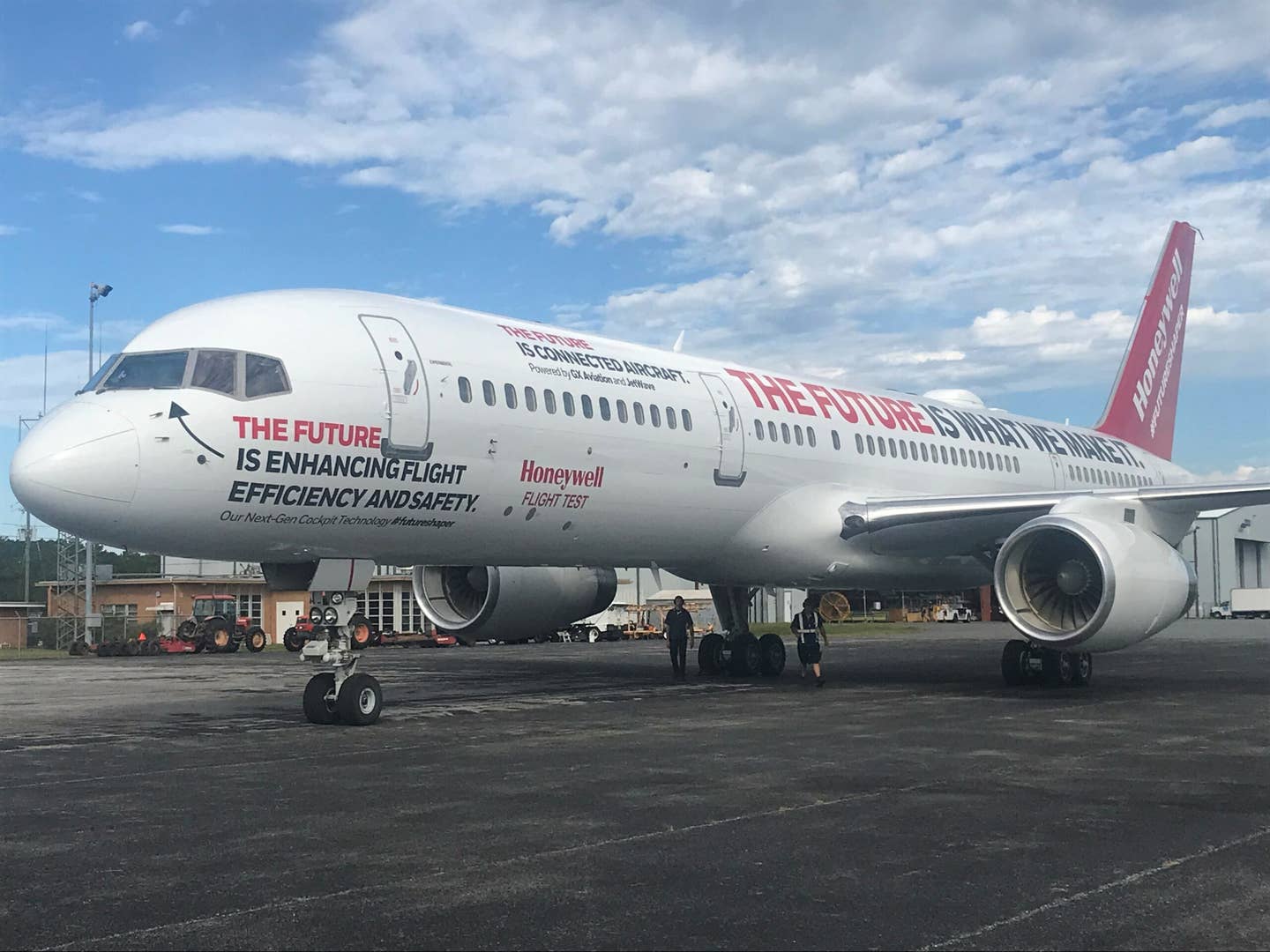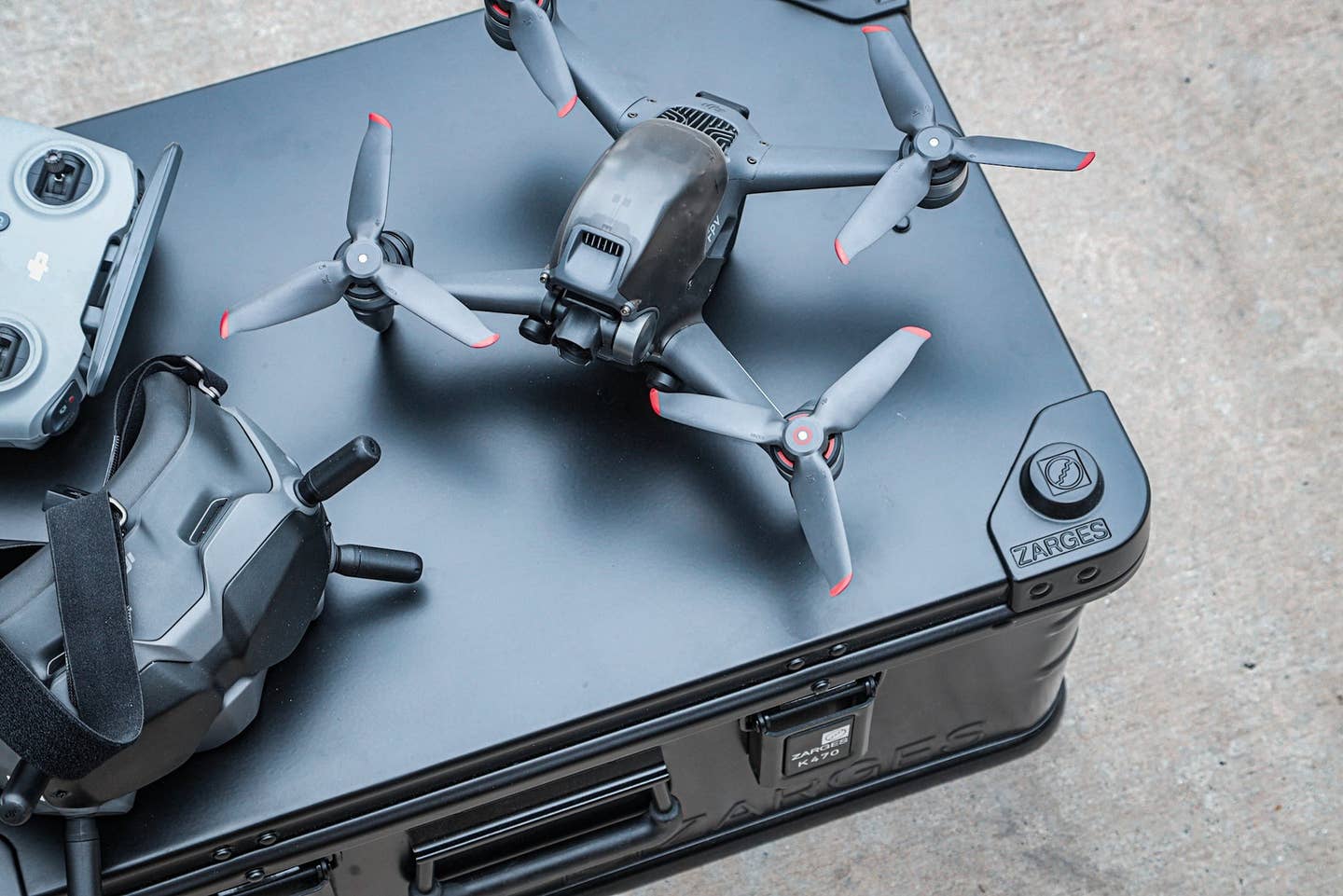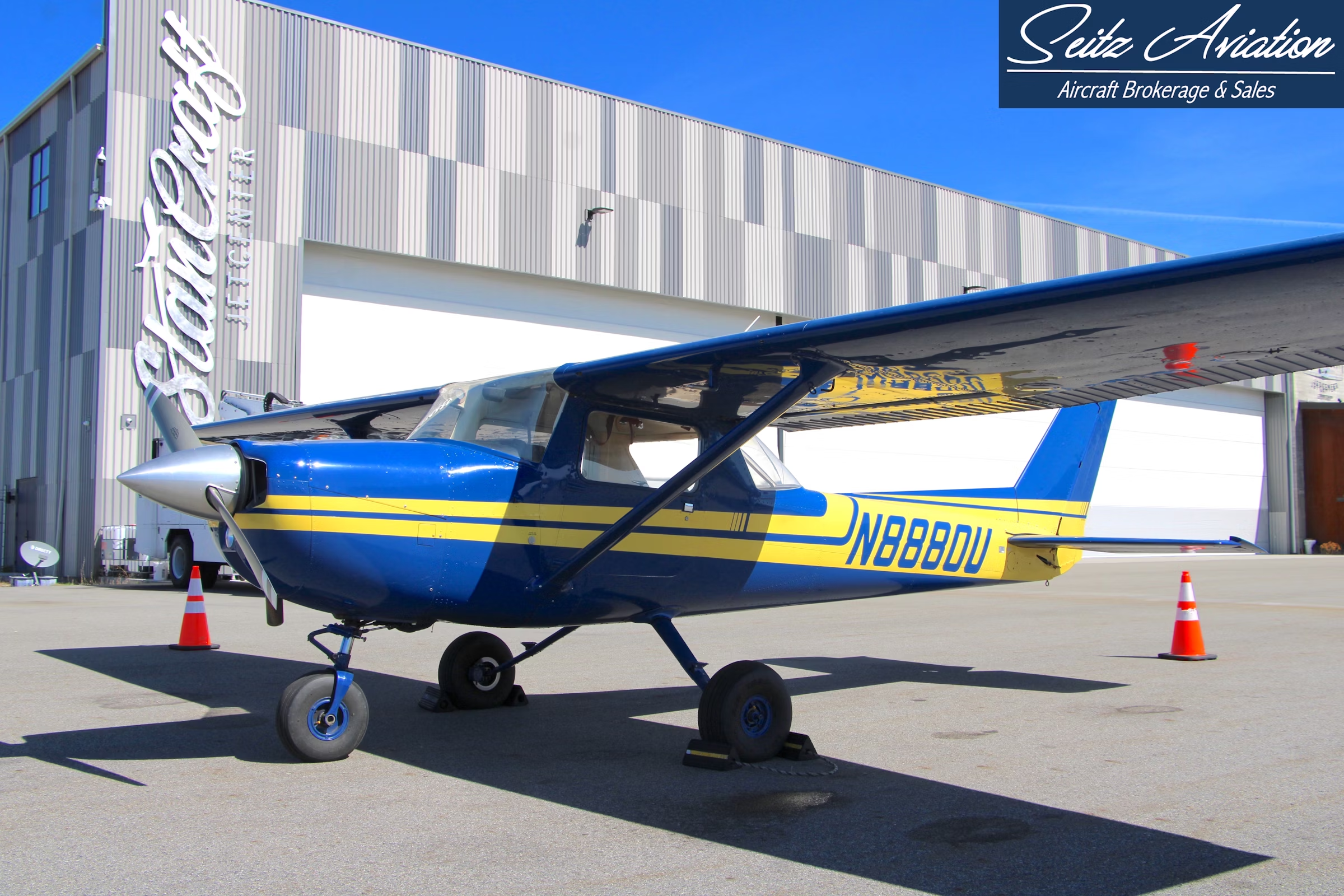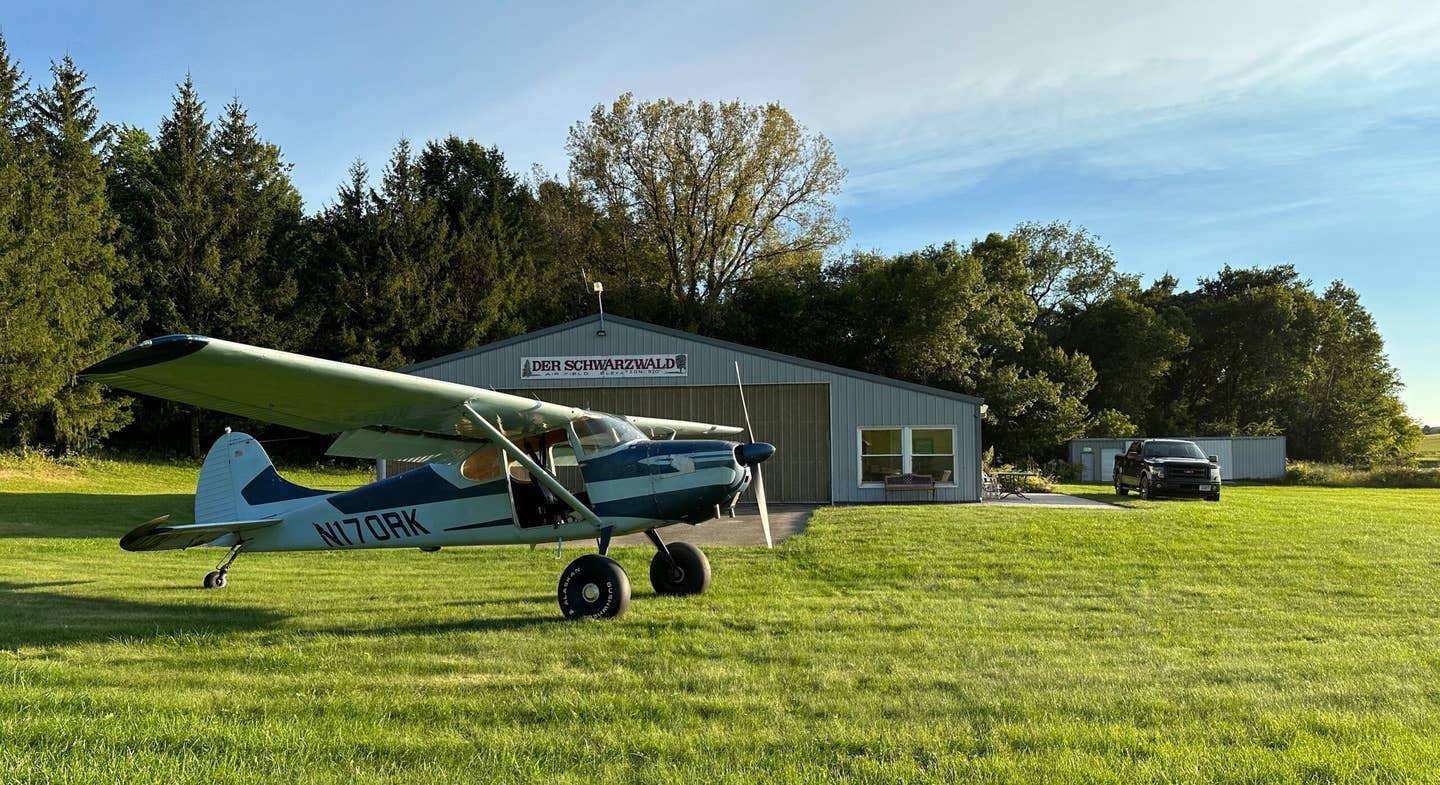Honeywell’s Boeing 757 Testbed Turns 40
Honeywell Aerospace’s Boeing 757-200 testbed turned 40 this year, after more than 800 test flights and 3,000 flight test hours, worldwide.

Honeywell’s Boeing 757-200 testbed, N757HW, rolled off the production line 40 years ago. [Courtesy: Honeywell Aerospace]
Look who’s turning 40: Honeywell’s (NASDAQ: HON) unique Boeing 757-200, the well-known testbed—with a third engine pylon jutting out from the right side of its fuselage.
In 1982, this twin-engine classic was the fifth 757-200 to roll off Boeing’s assembly line in Renton, Washington. After beginning its career as a narrow-body passenger airliner with launch customer Eastern Air Lines in 1983, the jet was acquired by Honeywell in 2005 to help develop, test, and qualify Honeywell engines, avionics, and communications systems.
During its 17 years with Honeywell as tail number N757HW, the airplane has played a critical role in making flying more efficient.
Technicians can test engines on the ground in a test cell, but Honeywell says there’s really no substitute to running an engine where it was meant to run—in the air. Acquiring the 757 as a testbed has “proven to be a really good decision,” said Captain Joe Duval, director, flight test operations, Honeywell Aerospace.
Duval—a former pilot for the U.S. Air Force and later American Airlines—has been flying N757HW since Honeywell first added it to its fleet of test aircraft.
Honeywell’s flight-test program goes back to the mid-1960s. The company flew a Boeing 720 as a testbed until it began looking for a successor.
A team evaluated the Airbus 320 series and the 767 and even the 747 from Boeing, Duval said. Based on the performance capabilities they were looking for, they arrived at the 757. N757HW is propelled by two Rolls-Royce RB211-535E4 turbofans.
In addition to testing engines, the jet is also used to analyze performance of avionics, safety, and communications systems. Other interesting facts about N757HW:
- It has performed more than 800 flight tests and logged more than 3,000 flight-test hours around the world.
- Honeywell says it’s likely the only existing 757 that has traveled to more than 30 countries across five continents—places like Thailand, Malaysia, French Guiana, China, Australia, and Yellowknife, Canada.
- It has played a critical role in development of Honeywell’s HTF7000 engine series.
- The jet has also successfully tested next-generation flight management systems.
- It was instrumental in testing advanced 3D weather radar systems such as IntuVue RDR-4000 Weather Radar and IntuVue RDR-7000 Weather Radar.
- It also has tested wifi systems, such as Honeywell’s JetWave and JetWave MCX.
- The jet was used to test satellite communications systems such as Aspire 350 and 400.
About the Aircraft
Most of the 1,050 757s that Boeing produced until 2004 have served out their working lives as medium-haul, single-aisle airliners that carry about 200 passengers.
Based at Arizona’s Phoenix Sky Harbor International Airport (KPHX), Honeywell’s 757 is hard to miss, with its extra engine pylon and the giant slogan “The Future Is What We Make It,” emblazoned across its fuselage in bright red lettering.
When you first board N757HW, you notice the passenger cabin is limited to 25 seats, which makes room for a wide variety of flight test engineering stations.
An onboard data collection system gathers and records metrics for analysis by engineers. Sensors measure temperature, pressure, and other variables inside each engine attached to the test pylon.
The typical flight test crew varies depending on the mission, but often numbers seven or eight crew members including:
- two pilots
- a flight test engineer or test director
- onboard technicians monitoring two dozen computers and three to four computer networks
- engineers and/or systems engineers
Typically, the jet tests engines in level flight at FL450. Getting to that altitude is quick work for a 757 that has a relatively small flight crew and equipment.“We have this extra performance,” said Duval. “The vertical velocity indicator only goes up to 6,000 feet per minute. We can usually peg that thing.”
“In fact, sometimes when we're going to 45,000 feet, we actually have weight limits,” he said. “I have to be below about 170,000 pounds gross weight for us to be able to get to 45,000 feet and operate there.”
The test pylon is surrounded by an aerodynamic fairing that helps with the airflow. It was intentionally attached to a point as near as possible to the center line of the aircraft’s fuselage to incur less drag.
Also, a universal test engine nacelle is sometimes used—which is about 4-8 inches larger in diameter—to allow engineers to place more components around the test engine inside the nacelle.
“We did a lot of work trying not to impact the operating envelope of the airplane.”
“If we operate the airplane at a nominal climb and nominal cruise speed—like 0.8 Mach—you barely notice that the engine is attached,” he said. “If we go faster—say 0.85 Mach—at lower altitudes, we do see the drag. We see some yaw to the right, and we counter that with rudder or rudder trim.”
The air flowing over the vertical tail is somewhat asymmetric, because of the influence of the pylon,” Duval said. “As you get slower, your rudder becomes more of a roll device than a yaw device. Technically, you have a higher angle of attack.”
After four decades of service, the airplane isn’t scheduled to be put out to pasture any time soon. Although many other 757s have already been decommissioned from airline fleets, Honeywell says it has no plans to retire N757HW.

Sign-up for newsletters & special offers!
Get the latest FLYING stories & special offers delivered directly to your inbox






